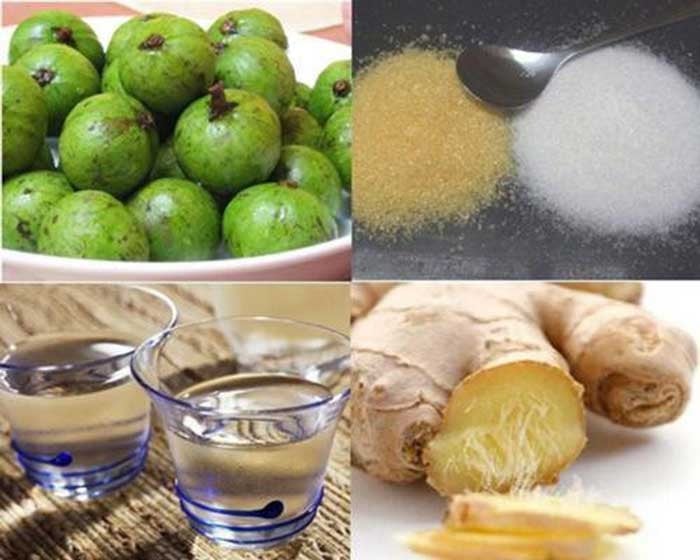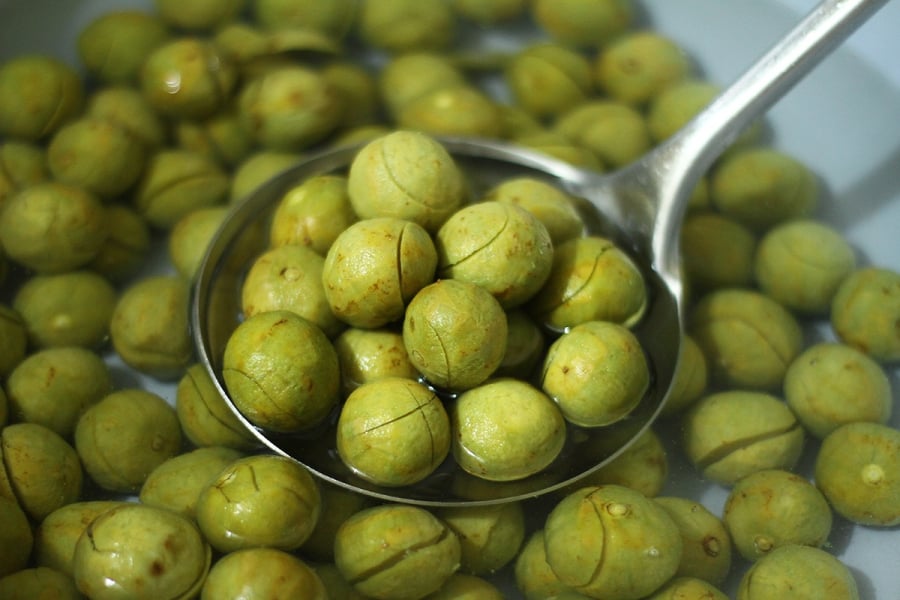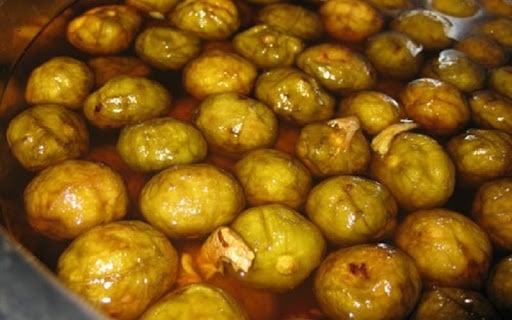To prevent scum and maintain the attractive color of your pickled tamarind, follow these specific steps to ensure the best preparation.
You can boil the sugar syrup before adding the tamarind. With this method, your pickled tamarind will never develop a scum layer. When the syrup boils, add some bruised ginger for flavor, then turn off the heat. Wait for the syrup to cool completely before adding the tamarind.
Here are the detailed instructions:
Step 1: Prepare the Ingredients

How to Pickle Tamarind Without Scum and With a Honey-Like Color
-
Select Tamarind: Choose ripe, clean tamarind pods free of pests and diseases.
-
Necessary Tools: You’ll need a sharp knife for peeling and cutting the tamarind, a cutting board, and clean utensils.
Step 2: Peel and Cut the Tamarind
-
Peel and De-seed: Use a sharp knife to carefully peel the tamarind. Then, cut it into thin slices and remove any remaining seeds.
-
Rinse the Tamarind: After cutting, rinse the tamarind slices with clean water to remove any dirt or impurities.

Preliminary Processing of Tamarind Before Pickling
Step 3: Pickle the Tamarind
-
Prepare the Pickling Solution: Use a large, clean pot, free of any grease. Boil the water and let it cool.
-
Soak the Tamarind: Once the water has cooled, place the tamarind slices into the pot, ensuring they are fully submerged and no scum forms on the surface.
-
Add Salt to Preserve Color: You can add a small amount of salt to the pickling solution to prevent the tamarind from changing color too quickly.
Step 4: Storage
-
Cover the Pot: After pickling, cover the pot tightly to prevent dust and insects from getting in.
-
Refrigerate: To ensure the pickled tamarind stays fresh and retains its color, store it in the refrigerator.

Pickled Tamarind Water: Delicious and Scum-Free
Notes:
-
Choose Fresh, Clean Tamarind: The quality of the tamarind directly impacts the final result of your pickle.
-
Use Clean Tools and Surfaces: Ensure all tools and surfaces that come into contact with the tamarind are thoroughly cleaned to prevent bacterial contamination.
-
Regularly Check and Maintain: Regularly inspect and clean the pot and tamarind to maintain quality and food safety.
Pickling tamarind is a traditional way to enjoy the fruit during the season and impart a delicious flavor. By following these steps, you’ll have scum-free, beautifully colored pickled tamarind for your culinary creations.

































